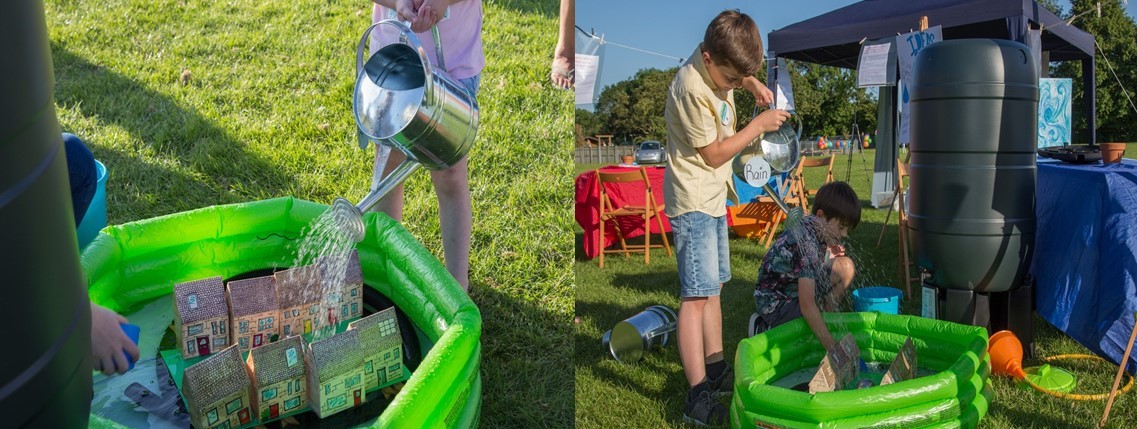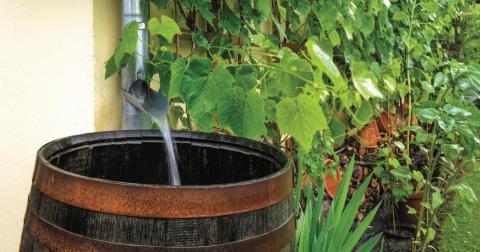Mobilising Citizens for Adaptation (MOCA) explores whether and how household or community scale rainwater harvesting (RWH) could reduce flood risk in Hull. Well known for providing drought resilience, RWH is the process of collecting rain in a water butt or raintank and using it for another purpose like flushing the loo. RWH also reduces flood risk if sufficient local raintanks have capacity at the start of a rainstorm. This project uses action research and community development to explore social acceptability and preferences for flood resilient RWH. Options range between simple manually emptied water butts and SMART raintanks where emptying is automatically triggered based on weather forecasts. If feasibility is confirmed, our Hull partners will fit RWH within the neighbourhoods. Whether or not rainwater harvesting turns out to be feasible here, our findings will contribute knowledge about when and how rainwater harvesting for flood prevention can integrate with people’s everyday lives.

Mobilising Citizens for Adaptation: building local flood resilience through cooperative rainwater harvesting explores whether and how rainwater harvesting could work to reduce flood risk. It will do this through case studies in a flood vulnerable part of England around the city of Hull. Rainwater harvesting is a popular means of addressing drought, particularly in countries with chronic issues of water shortage. If many nearby properties undertake rainwater harvesting, however, it could also be an effective means of preventing floods. Before our homes were built the rain that falls on our property would have soaked into the ground, or puddled and then evaporated. Now our roofs and drains mean that heavy rain flows very rapidly into the sewer. Sometimes the sewer is not big enough to cope with all the rain. If we can reduce the amount of rain on the roads and/or keep rain out of the sewer (or at least slow it down) then we might be able to prevent rain or sewers flooding homes, and sewers polluting rivers. Many UK householders own and operate ‘simple’ water butts, typically using collected rainwater for garden watering during summer. For a water butt to help prevent flooding, spare capacity is needed at the start of the rain. This cannot be guaranteed for a manually-emptied water butt, particularly in winter, when gardens do not need watering. ‘Smart’ options have been developed to address this, for example, some discharge water slowly, while some are computer controlled and release stored water ahead of forecast rain. But this creates a potential difficulty: if we are asking households and communities to take on rainwater tanks, how are they going to feel if the water in ‘their’ tank is released without their say-so? This question concerning ‘how will the water be controlled’ is just one of many issues that might concern households who could be asked to take on a rainwater harvesting tank to help protect other people in their city from flooding. Households are also likely to be concerned about the appearance of a rainwater tank, where it would be, who would pay for it, and what would happen if it went wrong.
In this project we are going to work with the residents and community groups in two different areas near Hull – one richer and one poorer – but both in locations which contribute to downstream flooding problems. We will talk with households and community groups to explore whether, where and how rainwater could be stored in their neighbourhood to help prevent flooding downstream. In asking ‘whether’ and ‘where’ we would be considering whether there is space to put tanks or build ponds near their community buildings, in their open spaces or in their homes. In asking ‘how’ we would be exploring what sort of ponds or tanks, of what appearance, to whose cost, and under whose control. We will report our findings to the water company and local authority. If we find rainwater harvesting is feasible in the case study sub-catchments, the water company and local authority have agreed to go ahead and fit the devices according to our plan. Whether or not rainwater harvesting turns out to be feasible in these particular sub-catchments, our findings will contribute knowledge about when and how rainwater harvesting for flood prevention can fit in with people’s everyday lives.
Publications
Sharp, Liz; Kenyon, Anna; Choe, Eun Yeong. 2020. Designing Blue Green Infrastructure (BGI) for water management, human health, and wellbeing: summary of evidence and principles for design. The University of Sheffield. Report.
Sefton, C., Sharp, L., Quinn, R., Stovin, V. and Pitcher, L. 2022. The feasibility of domestic raintanks contributing to community-oriented urban flood resilience. Climate Risk Management, Vol. 35, 100390

